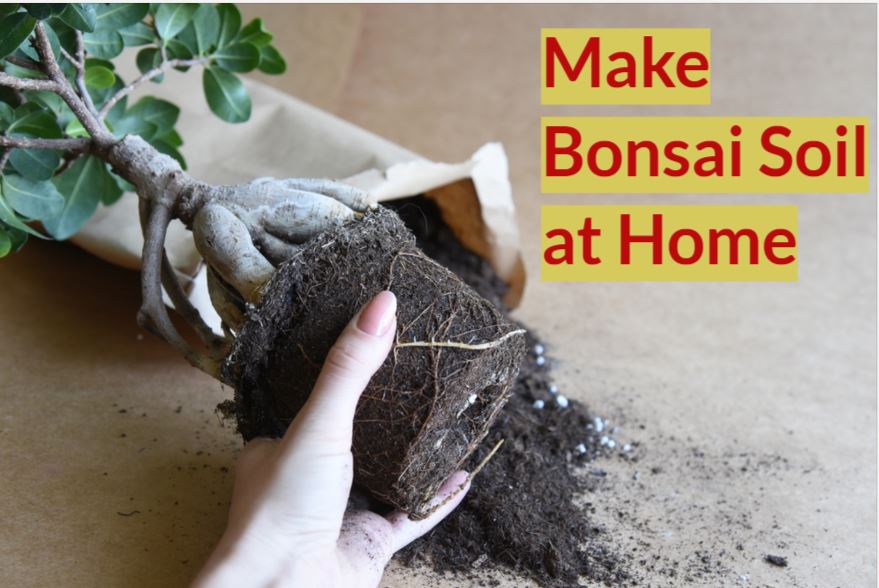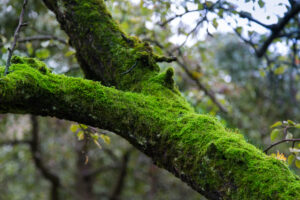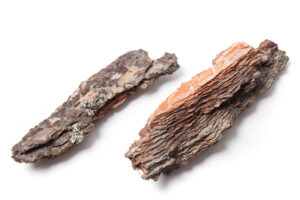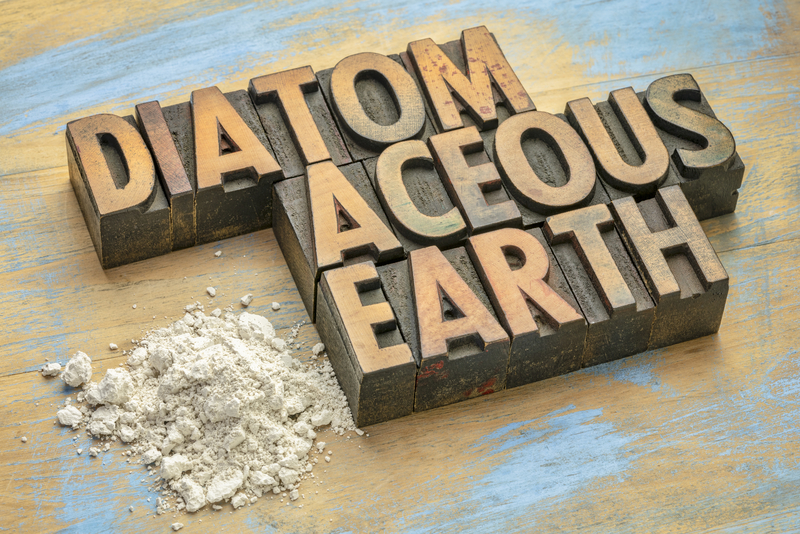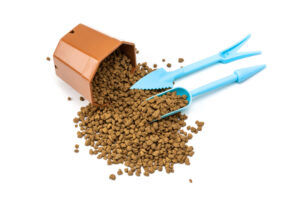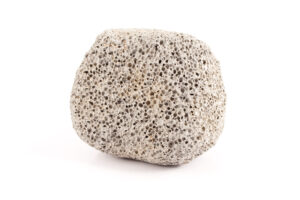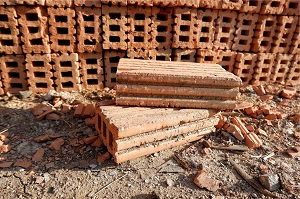HousePlantJoy is supported by our audience. When you purchase through one of our links, we may earn a small affiliate commission. As an Amazon Associate I earn from qualifying purchases. Your cost is not affected.
==================
Healthy Trees when you Make Bonsai Soil at Home
While there is no “recipe” on how to make bonsai soil at home that is universally applicable, each bonsai tree has distinct soil preparation requirements and practices that must be followed. Typically, this consists of a mixture of pumice, lava rock, and akadama in the proper proportions to form the base. On the other hand, organic compost is sometimes utilized as a mixing element as well.
Before you make your first attempt at creating a bonsai, you should be familiar with how to manufacture bonsai soil at home, the soil components, the criteria for each component, what each component accomplishes, and some basic instructions. This post will go over every one of those things in detail, so stay tuned. After reading this article, you will be nothing less than a true bonsai artist, and you will know what that means.
repotting time
Criteria on How to Make Bonsai Soil
The primary reason ordinary garden soil cannot be utilized for bonsai cultivation is that the soil must behave slightly differently. Bonsai soil is granular and devoid of organic matter, allowing air pockets to form between the soil particles. There are three essential criteria. However, both of these are very necessary. Which criteria are essential, and why they are important, should be understood by any bonsai enthusiast? Below are the requirements on how to make bonsai soil.
Water Retention
A steady supply of water is required for bonsai. As a result, the soil must hold enough water to keep itself hydrated between waterings. However, there is a drawback to this. The soil must be able to hold just enough water to remain hydrated. A buildup of water will result in the tree becoming damaged. Due to this, garden soil cannot be used because it retains excessive moisture. When there is insufficient water, the water drains quickly, and the earth gets dry. When there is no watering, the bonsai will suffer from a lack of moisture.
Water Drainage
A high level of water retention is detrimental to practically everything. Natural garden soil absorbs an excessive amount of water before allowing it to drain through the pores in the container. Also, the tree will not obtain sufficient oxygen to survive if the water is kept in the air pockets. In addition, the root will decay, resulting in the tree’s death. Consequently, appropriate drainage is essential in conjunction with water retention. Because of the lack of proper drainage, excess water will destroy the bonsai’s roots and cause it to die.
Air Incorporation Into the Soil (Proper Aeration)
The bonsai need oxygen in the same way that every other living thing does. Growing roots, in particular, necessitate the presence of oxygen. Because bonsai are kept indoors, there isn’t enough natural oxygen to support them. It will be impossible for air to enter and provide oxygen to the soils if compacted. This is the reason why gravel-like compounds are employed in the soil. It allows for adequate aeration of the roots, enabling optimal growth.
What Do You Need for Making Bonsai Soil
Bonsai soil differs from regular soil in several ways. The soils blend a few organic and inorganic components rather than pure natural soil. Because organic components have a lower drainage capacity than inorganic compounds, inorganic substances predominate in the mix. Additionally, they have a high rate of degradation.
Water drainage, retention, and aeration can all be accomplished with relative ease using inorganic components. Additionally, you can utilize organic components to make bonsai soil. It is vital for the roots since it contains nutrients and important bacteria. As a result, we will divide the components into two groups and then discuss each category separately.
Organic
It is possible to use a variety of organic components for the same aims. Peat moss, berk of conifer trees, and a small amount of ordinary potting soil were used in this project.
Moss.
Moss on a Tree
Using organic materials mainly binds the inorganic components together, and moss is particularly effective in this regard. Organic components that are not tightly bound together can interfere with the formation of the root system. However, keep in mind that moss is quite effective in retaining water. It has the potential to cause long-term damage to your tree.
Photo 110445911 © Ognianmedarov | Dreamstime.com
Conifer Berk.
Conifer berk is also quite effective at blending soils in a large area. It adds bulk to the soil and provides for better water retention. The best aspect is that it is also highly effective at draining water. As a result, you won’t have to worry about the roots rotting.
Diatomite.
Also known as DE, diatomaceous earth, or oil sorbent, diatomite offers a natural alternative. Though not considered as a necessary component of bonsai soil, DE offers some benefits. With good absorbency of water, it makes an ideal choice for water retention material.
Garden Potting Soil and Decomposing Component.
Potting soil is primarily utilized to make bonsai soil. It binds together the various organic components of a plant and the inorganic components of the plant. Potting soil, on the other hand, has excellent water retention capabilities. It can displace oxygen and impede the activities of Mycorrhiza, a bacteria that is necessary for the processing of meals and the production of nutrients for photosynthesis. Decomposing materials are employed as a source of nutrients most of the time. Because they are organic, they are rich in nutrients and serve as a source of nutrition for the roots.
Inorganic
Bonsai’s inorganic elements are the bread and butter of the craft. They have all of the characteristics of optimal bonsai soil and help the plants thrive.
Akadama.
“Red Ball Earth”, Akadama.
Akadama is the most extensively used and popular component when making bonsai soil. Yet it is also the most expensive. Its origins are Japanese, and it is related to the bonsai tree. Manufacturers first burn or hard-bake this clay-like substance until it becomes robust enough to be used in a construction project. The components of bonsai soil must be large granular. It is recommended by many bonsai specialists that after purchasing akadama. It is strained to remove any minute particles that may have formed during the growing process.
Akadama is utilized solely to retain water and nothing else. Keep in mind that it does not have a draining capability. As a result, pros recommend using a good draining material in conjunction with it. Apart from that, after a few years of use, akadama begins to degrade and break down into tiny pieces. It leads to completely blocked drainage. Thus, you need to repot your plants regularly.
Pumice.
Volcanic Pumice
A volcanic component found in the earth’s crust pumice offers good benefits when you make bonsai soil at home. Made when high-pressure and high-temperature lava flow releases from the volcano,it then rapidly cools and decompresses as a result of the surrounding environment. It has a porous structure with a lot of holes in it. As a result, it can store vast amounts of water. Also, this volcanic component helps increase water retention.
Another function of pumice is to aid in the development of the roots. Even though pumice is highly porous, the pores are too small for the roots to pass through. Roots form branches around the pores, and the pumice particles eventually break down into smaller bits as the roots grow. An additional benefit of pumice comes from its ability to hold the components together. Its draining abilities offer still more benefits. However, it possesses a lower retention capacity and a higher drainage capacity than akadama. Use Pumice for both purposes but especially as a catalyst for the production of akadama.
Lava Rock.
Lava Rock
As you may have guessed, lava rock is formed due to volcanic eruptions and is composed of lava. It is one of those components that can be used for all three purposes simultaneously. Porous and suitable water retention capabilities drain water swiftly and have good drainage properties. It creates a space between two particles, which is beneficial for aeration. It has two key advantages in comparison to akadama and pumice. Lava rock is primarily employed for water retention, with aeration serving as a secondary function.
Turface – Calcined Clay
calcined clay — turface
Turface also known as calcined clay, is a high-fired clay with excellent aeration and drainage capabilities because of its high porosity. This good drainage makes it desirable for use on cricket fields, golf courses, football fields, and other sports fields. The aeration and drainage provide an excellent foundation for bonsai soil, too.
Grit or Gravel.
Gravel (grit)
Whatever you want to call it, grit or gravel, these are little stones. They are mainly employed for aeration and drainage purposes only because of their low water retention qualities. Grits were almost always used for aeration and drainage purposes in the industry’s early days. However, presently, materials such as lava rock, pumice, and other similar materials meet all requirements. You can rarely utilize grits because of this.
You Can Make Bonsai Soil at Home
Combine equal portions of red soil and yard manure with one part of river sand, then sift each ingredient three times to remove any impurities. Hereunder is a step-by-step process of how you can make bonsai soil at home.
- First, sift through the material using a giant screen, separating it into piles or buckets as the material passes through the net.
- Now, using the medium screen, sift the material that passed through the largest screen once more. The material that does not fall through the screen should be kept in another stack of bags or buckets.
- Now filter through the finest screen one more time. The material that does not fall through the screen should be collected in a third pile or bucket.
The ‘Must Know’ Fact Between Organic and Inorganic Soil
Organic refers to anything that contains any life component. Soil that is typical of a garden is organic because it contains ingredients from deceased animals, plants, and fossils that have been preserved over thousands of years. Organic soil is ideal for all plants. But it is suited for bonsai particularly. Bonsai enthusiasts widely recommend using inorganic compounds for bonsai plants, and there are several strong grounds for this recommendation.
Organic materials are rich in nutrients, and plants develop rapidly as a result. In the case of bonsai, however, we want the polar opposite. The fact that we are restricting its growth means that we want it to remain slow and steady until a particular point. It is not possible to reach this goal by employing organic soils. They contain various biological components that function in the polar opposite direction of what we desire.
The Why to consider when you make bonsai soil at home
The primary reason they are not recommended for use is because of the brittleness of organic components. They degrade quickly when exposed to the elements. As they break down into tiny particles, the amount of water that drains away decreases. Proper drainage is critical for bonsai trees since held water will cause the roots to rot, ultimately resulting in the death of the plant.
Decay rates differ
No organic matter decays at the same rate as all other organic matter. Because different types of matter decay at different rates, it can be challenging to establish whether a plant has begun to suffer due to decaying materials. Furthermore, because certain repotting is hazardous to some bonsai, you cannot easily modify the soil components.
Consider the water factor
The worst aspect about organic materials is that, even if you manage to remove the surplus water from the soil, it is difficult to re-wet them once the soil becomes too dry. They begin to repel water as soon as they have been over-dried. Inorganic materials are recommended for bonsai cultivation because they meet all of the requirements for bonsai growth and development. They only hold a small amount of water and then drain the remainder.
They also enable the integration of air and oxygen, which is necessary for root growth. That is why you can initially utilize organic soils were initially utilized as a substrate.
When you make bonsai soil at home, great things happen!
The best bonsai soil satisfies all of the requirements for supporting a small tree, including sufficient drainage, adequate aeration, and water retention, among other things. How to make bonsai soil mix is not difficult if you know which components to include and which ones to leave out, depending on the plant type and growing environment.
Gardening enthusiasts engaged in more than a recreational activity when they transform an existing plant into a stunning bonsai tree. To keep the plant in a small container, you must nurture it and provide it with the necessary nutrients. A bonsai is a shrub or a tree whose growth form has been modified to resemble a small tree.
That is why growing requirements and care for it are different from those of a standard potted plant. Everything linked to producing a bonsai. From selecting the plant species and pot form to mixing the soil components. You should do it with the greatest care.

